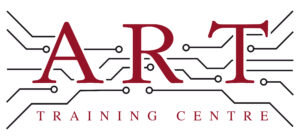Definition
Accept Condition is a standard used in electronics manufacturing to define the acceptable quality levels for components and assemblies. It serves as a guideline to determine whether a product meets the required specifications for functionality and appearance. This concept is crucial in ensuring that electronic devices perform reliably and safely, making it a key component in quality control processes within the industry.
How It’s Used in the Industry
In electronics assembly, Accept Condition is applied during several stages, including soldering, inspection, and rework. Initially, technicians refer to predefined criteria to assess the quality of printed circuit boards (PCBs) and solder joints. During soldering, they ensure that connections meet the acceptable standards for strength and conductivity. After assembly, inspection is conducted to verify that components are correctly placed and free from defects. This process is vital for both trainees and experienced professionals, as it ensures that all products meet industry standards, reducing the risk of failures in the final product.
History & Origins
Accept Condition became prevalent in electronics manufacturing during the mid-20th century, coinciding with the rise of consumer electronics. The development of standards, such as those established by IPC (Institute for Printed Circuits), played a significant role in formalising quality benchmarks. As technology advanced, the need for reliable and consistent manufacturing processes grew, leading to the widespread adoption of Accept Condition guidelines to enhance product quality and performance.
Variations
There are several variations of Accept Condition, including visual and functional acceptance criteria. Visual acceptance focuses on the appearance of components, ensuring they are free from cosmetic defects, while functional acceptance criteria assess the operational performance of the assemblies. These variations differ from each other in their specific focus, yet all aim to ensure that products meet the necessary quality standards, contributing to the overall reliability of electronic devices.
Modern Applications
Today, Accept Condition is integral to electronics production, repair, and professional training. It is used in various assembly methods, including surface mount and through-hole technologies, ensuring that products comply with IPC standards. The application of Accept Condition helps maintain high quality and reliability in electronic devices, which is essential in an era of rapid technological advancement and increasing consumer expectations for performance and durability.
Practical Tips & Training
When working with Accept Condition, it is essential to understand the specific criteria for your project. Use proper inspection techniques, such as visual checks and functional testing, to ensure compliance. Familiarise yourself with relevant tools, such as magnifying glasses and testing equipment. Structured training and certification in electronics are crucial for mastering these standards, enhancing both safety and quality in your work.


